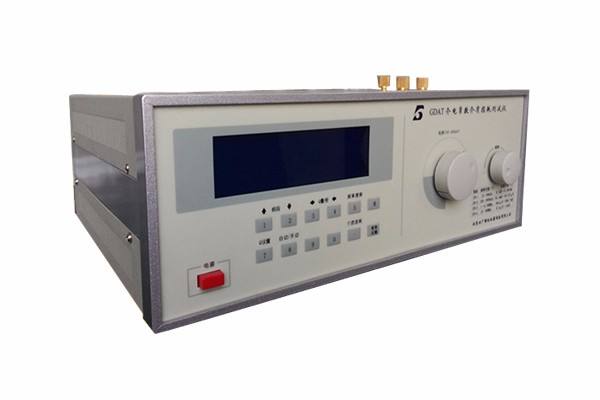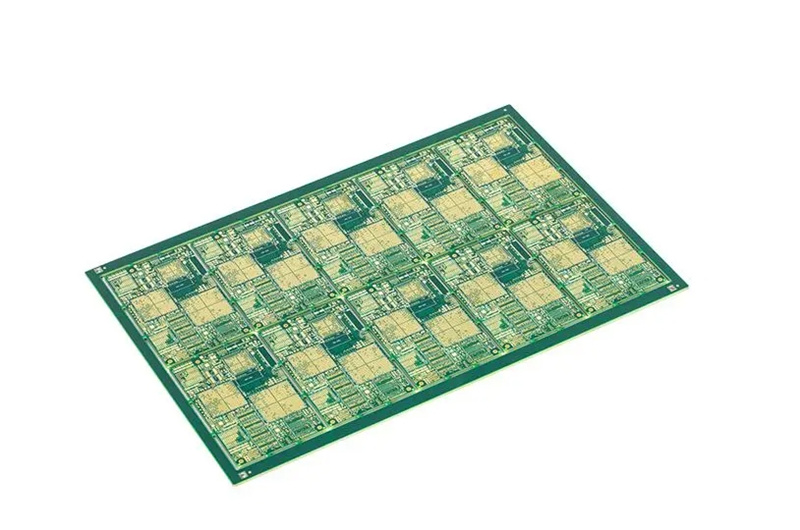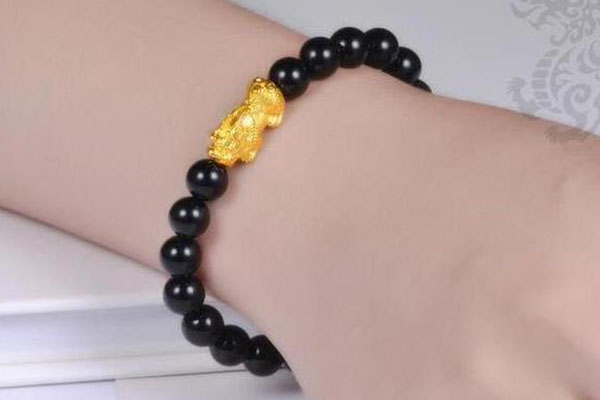What is the dielectric constant?
A dielectric can be defined as an electrical insulator that allows a negligible amount of charge to pass through it. Limitations of intrinsic molecular forces inhibit macroscopic displacement of charged particles in dielectric molecules. However, the presence of an external electric field can initiate microscopic displacement of the charged particles. Consequently, the dielectric can be polarized. χe represents the polarizability of the dielectric, which reflects the properties of the dielectric. χe is the same for all points in the dielectric, χe=0 in a vacuum, and χe>0 for any other medium.
A dielectric is placed in between two capacitors to increase the capacitance of a capacitor. The relative permittivity of the dielectric, which is governed by the characteristics of the dielectric, is the ratio of the capacitance C when the two plates are filled with a homogenous medium to the capacitance C0 when the plates are in a vacuum εr=C/C0.
Principle of Dielectric Constant Tester:
The constant dielectric tester follows the primary approach of employing a high-frequency resonance method. It offers a general, multi-purpose, multi-range impedance test and uses a single chip computer to manage the instrument. The core measurement moves towards new technologies such as frequency digital locking, automatic setting of standard frequency test points, automatic search for resonance points, automatic conversion of the Q value range, and numerical display. The instrument exhibits better residual inductance followed by accurate measurement. The Q value of high-frequency inductance or resonant circuit, the effective parallel and series resistance of high-frequency circuits, the characteristic impedance of transmission lines, the inductance and distributed capacitance of inductors, the capacitance and loss tangent of capacitors, the high-frequency dielectric loss of electrical materials, etc. can be measured with the help of the instrument.
The high-frequency insulating material dielectric constant and loss system contain the following components:
- Test device
- High-frequency Q meter
- Data acquisition
- tanδ automatic measurement control inductor.
The test device is made up of plate capacitors. The sample is provided with a Q meter which functions as an indicator. The change in Q value and the scale reading of the sample’s thickness with and without the plate capacitor is used in the formula to get the loss tangent value of the insulating material.
What are the factors that affect the dielectric constant?
The dielectric constant is closely associated with electrical polarization. Hence, the factors that influence electrical polarization directly affect the dielectric constant. The first is the Polarization type. The following typical polarization types are determined by the various polarization mechanisms: elastic displacement polarization and dual polarization. Pole transfer polarization, relaxation polarization, resonant polarization, sandwich polarization, high voltage polarization, spontaneous polarization, etc., are some examples of polarization processes. The polarization of dielectric materials is related to their form.
Temperature directly influences the dielectric constants. The relationship between dielectric constant and temperatures enables the division of dielectrics into two types. One is dielectrics with a strong nonlinear relationship between dielectric constant and temperature. The temperature co-efficient does not help with the identification of temperature characteristics of such materials. The second type is the dielectric constant has a linear relationship with temperature. The link between this type of material’s dielectric constant and temperature can be described using the temperature coefficient TK of the dielectric constant.
Each unique material exhibits a different polarization form. Furthermore, the degree of polarization is directly associated with temperature. Certain materials display a rise in the degree of polarization with an increased temperature, whereas other materials exhibit the opposite phenomenon. Therefore, for some materials, the TKe is positive, and for others, negative. It has been observed that an increase in temperature results in increased ionic polarizability. The polarization strength is more affected by rising polarization than by decreasing density. Hence the temperature of these materials’ dielectric constant is positive. The density of the medium and polarization strength decreases for dielectrics with only electron polarization. The temperature coefficient shows a negative value. Generally, materials with a large dielectric constant display a negative TKε value, whereas those with a small dielectric constant have positive TKε values.
What are the measurement methods of the dielectric constant tester?
The present methods of the dielectric constant tester to measure the dielectric constant are:
- concentrated circuit method
- transmission line method
- resonance method
- free space wave method
Among them laboratory measurement techniques are laboratory measurement techniques: the transmission line method, the centralized circuit method, the resonance method, etc. The measurement is typically performed in a laboratory environment, requiring the necessary sample collection technology.
- Concentrated circuit method
This method fills the capacitor with lossy materials at a low frequency. The essential parameters of the capacitor and measured admittance are used to determine the dielectric constant. In the formula, Y is the admittance, A is the capacitance area, d is the distance between the plates, ε0 is the air permittivity, and ω is the angular frequency.
- Transmission line method
This method is identical to a network method which includes placement of the medium in the test system as a single port or dual-port network. In the case of two ports, the electromagnetic parameters of the microwave are obtained by measuring the s-parameters of the network.
3. Resonance method
The dielectric constant is measured by employing the sample as a part of the resonant structure. This is the resonance method. The formula for full fill can be used where ε’ represents the fundamental part of the complex permittivity, whereas ε” represents the imaginary part. Q is the quality factor, tanδ is the loss tangent, and f0 is the resonant frequency without the sample.
4. Free Space Law:
The Free Space Law method is also known as the transmission line method. The methodical approach includes the involvement of the line transmission method by determining the transmission and reflection coefficients. Changes in sample data and frequency can help determine the dielectric constant value.
Application example of dielectric constant tester:
Lubricant application:
The dielectric constant can be measured with the help of an oil quality detector. The operation of mechanical equipment has garnered attention. Friction and wear are considered the primary causes of mechanical failure which ultimately affects the mechanical life. The blood of any mechanical equipment is its lubricating oil. A qualified lubricating oil functions as an essential part of the mechanical equipment as it is involved in sealing, lubrication, anti-wear, shock absorption, and anti-corrosion. Any changes in the quality of lubricating oil can lead to the wear and tear of the equipment.
Research studies have concluded that dielectric constant value can help monitor the oil quality. The relationship between oil and dielectric constant was examined theoretically, and the results displayed the theoretical relationship between the oil dielectric constant and the capacitance of the surface acoustic wave resonator according to the SAW resonator theory.
Food application:
Dielectric constant measurement technology is widely used in the food processing industry for storage, sterilization, grading, and quality inspection of products. Measurement of dielectric constant can indirectly reflect the freshness of fruit and vegetables, the moisture content, fermentation, and drying process. The food’s moisture content and dielectric constant are used to establish process parameters like sterilization duration and power density.
Civil construction industry:
The use of the conventional methods in the subgrade compaction quality inspection and evaluation can result in road surface damage despite accurate measurement due to the huge workload, slow speed, and long cycle. The soil’s moisture content, temperature, and density influence dielectric properties significantly. Therefore, radar can be used to test the entire area to calculate the dielectric constant value inversely. Roadbed density can be determined the closely analyzing the dielectric properties. The complex permittivity measurement method has been used to track soil and water pollution. Earthquakes can also be predicted by measuring the dielectric constant of the rocks in that area.
FAQ:
- What is the difference between dielectric constant and dielectric loss?
Dielectric loss is the amount of energy lost by the dielectric material being heated under the influence of an external electric field. No periodic loss is witnessed under the influence of the DC electric field, which is the loss due to a steady current state. In contrast, the medium loss has various AC losses in addition to the steady-state current loss under the action of the AC electric field. The losses in the dielectric are substantially more significant (often thousands of times more significant) than when a DC electric field is applied. Hence the losses in the dielectric are typically referred to as AC losses.
- What is the dielectric constant of water?
The dielectric constant of water is 78.36F/m. As far as the polarity of a polymer is concerned, it can be evaluated in accordance with the dielectric constant of the substance. Substances with relative permittivity higher than 3.6 are polar, whereas those within the 2.8–3.6 range are weakly polar. Substances with relative permittivity less than 2.8 are non-polar substances. The permittivity is the product of the relative permittivity and the absolute permittivity in a vacuum. The strength of an electric field is bound to reduce when a material with a high dielectric constant is placed in it. The relative permittivity of an ideal conductor is infinite.





Leave a Reply
You must be logged in to post a comment.